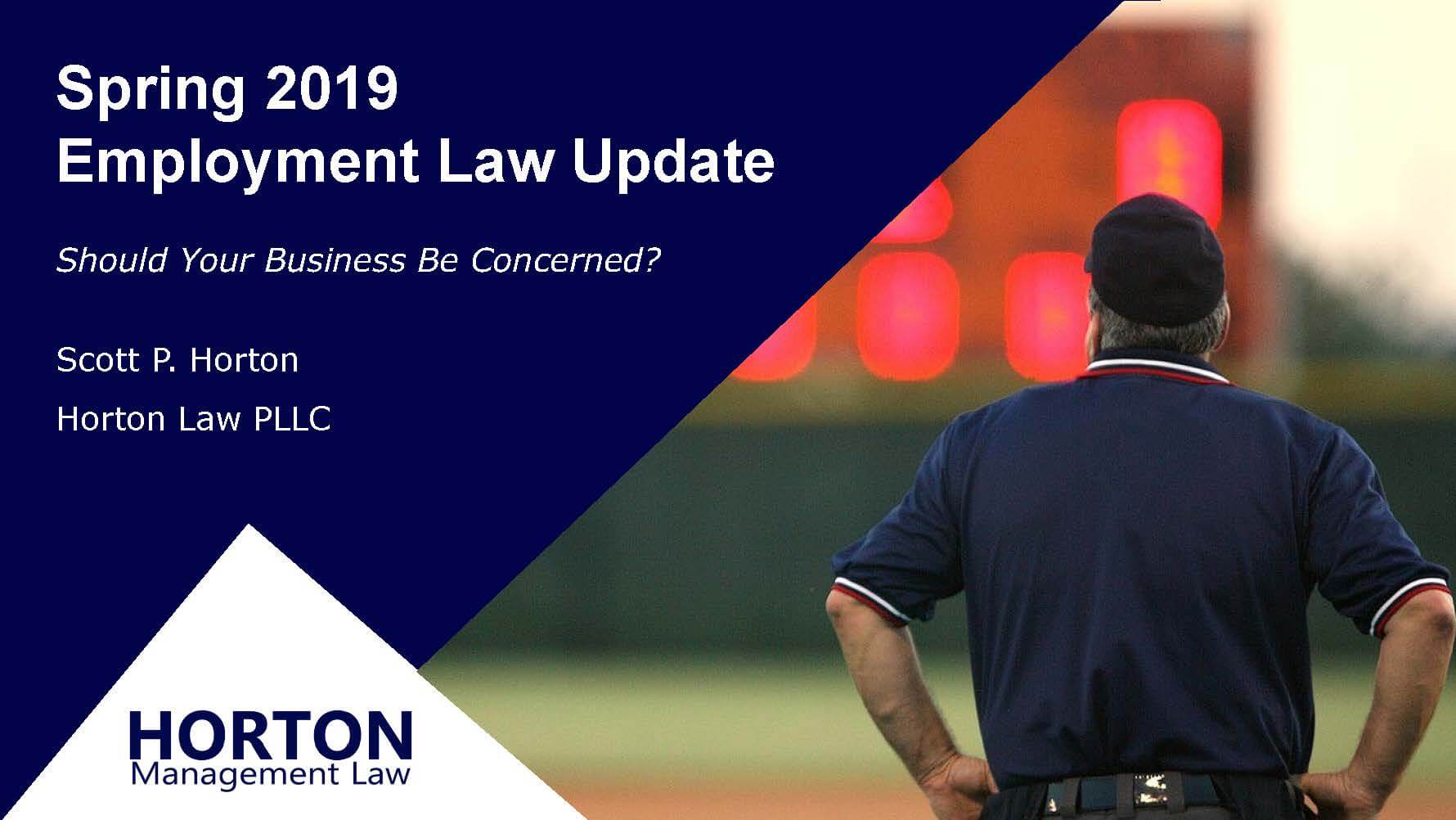For the first time in over 50 years, the U.S. Department of Labor updated its interpretation of “regular rate of pay” under the Fair Labor Standards Act (FLSA). The new DOL rule takes effective January 15, 2020. The changes address new, more complicated perks and benefits. These include wellness plans, fitness classes, nutrition classes, and smoking cessation classes. The new rule will make it less costly for employers to provide additional benefits to employees. This, in turn, may increase workplace morale and employee retention.
The FLSA Regular Rate
The Fair Labor Standards Act is the federal law that establishes minimum wage, overtime pay, recordkeeping, and child labor standards. The FLSA covers most employees in the private sector and federal, state, and local governments.
Under the FLSA, an employee is eligible for minimum wage and overtime unless they qualify for a statutory exemption.
The employer must pay “non-exempt” employees at least minimum wage and compensate them for overtime at a premium rate of 1.5 multiplied by the employee’s “regular rate of pay” for all hours worked over 40 in a “workweek.”
Under current regulations, the “regular rate of pay” includes all remuneration for employment paid to or on behalf of an employee for hours worked, except for specific categories that were excluded under the FLSA. This “regular rate” includes the hourly wages and salaries for non-exempt employees, most bonuses, shift differential pay, on-call pay, and commission payments. The regular rate of pay is generally calculated by adding the employee’s includible compensation each week and dividing it by the number of hours worked within the workweek.
For more details on performing the FLSA regular rate calculation, read Calculating the Overtime ‘Regular Rate’.
New Rule on Regular Rate of Pay
The new rule clarifies that the following perks may be excluded from the calculation of an employee’s regular rate of pay, effective January 15, 2020:
- The cost of providing parking benefits, wellness programs, onsite specialist treatments, gym access, and fitness classes, employee discount on retail goods and services, certain tuition benefits and adoption assistance;
- Payment for unused paid leave, including paid sick leave and paid time off;
- Certain penalties incurred by employees under state and local scheduling leave laws;
- Business expense reimbursement for items such as cellphone plans, credentialing exam fee, organization membership dues and travel expenses that don’t exceed the maximum travel reimbursement under the Federal Travel Regulation system or the optional IRS substantiation amounts for certain travel expenses;
- Certain sign-on and longevity bonuses;
- Complimentary office coffee and snacks;
- Discretionary bonuses (the DOL noted that the label given to a bonus doesn’t determine whether the bonus is discretionary); and
- Contributions to benefit plans for accidents, unemployment, legal services, and other events that could cause financial hardship or expense in the future.
The DOL has also expanded the circumstances where employers can exclude call-back pay from the regular rate. Such payments no longer must go into the regular rate unless they are scheduled and prearranged.
Regular Rate Pitfalls
Overtime Must Be Calculated Weekly
Under the FLSA, an employer is responsible for determining the official workweek. Employers have considerable leeway in doing so. However, the workweek must consist of a fixed reoccurring 168 hours that contains seven, 24-hour workdays. The workweek and workday start and end times must remain consistent unless employees receive advance notice of the changes.
Non-exempt employees must be paid overtime for all hours worked over 40 in a workweek (or as otherwise described by applicable law). Employers may not average the number of work hours worked by an employee over a two-week period, even if the employer has their payroll set up biweekly, to avoid paying overtime. For example, if an employee works 45 hours in week 1 and 35 hours in week 2, the employer may not average the hours worked over the two weeks resulting in a payment of zero overtime hours. Instead, the employee would be due 5 hours of overtime for week 1 and no overtime hours for week 2. Many employers make this mistake that could result in an extensive and expensive audit or litigation.
Employees Can’t Waive Overtime Pay
Non-exempt employees cannot waive their right to receive statutory overtime pay. This is true even for collective bargaining agreements or other written employment contracts.
Private Companies Can’t Use “Comp Time” Instead of Overtime Pay
Companies cannot provide employees with compensatory time (comp time) in exchange for payment for overtime hours worked each week. There are some exceptions to this rule for government workers.
Salaried, Non-Exempt Employees Are Still Eligible for Overtime Pay
An employer could pay a non-exempt employee a weekly salary that will represent pay for all regular hours of work. But if the employee works overtime during the workweek, the employer must pay additional premium compensation above and beyond the weekly salary for each overtime hour worked.
Example: An employee earns a weekly salary of $700 each week and works 43 hours. This employee’s regular rate of pay for this week would be $700/43=$16.28. The extra premium pay owed for the overtime hours can be determined by dividing the regular rate of pay in half. The employee should receive the normal weekly salary of $700, plus (3 hours x premium pay of $8.14) = $724.42.
State Overtime Laws
This new rule relates specifically to the FLSA. Many states have separate minimum wage and overtime laws. Employers often must satisfy both state and federal laws in this area. The “regular rate” concept may differ in some states. Therefore, be sure to consider the laws of your state in addition to the FLSA.
What Employers Should Do Next
Employers should conduct an overall audit to review what they include in their regular rate calculations. Companies using a third-party payroll provider should ask for clarification as to how overtime is calculated each week.
The FLSA is a complex law with many nuances beyond those described here. An experienced employment attorney can evaluate your pay practices and consult with you on overtime compliance. They might be able to identify alternative work schedules or payroll practices that comply with the wage and hour laws.
The new FLSA regular rate regulations are available here.


